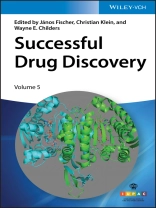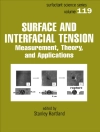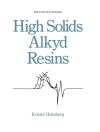Filled with unique insights into current drugs that have made it to the marketplace
In the fifth volume of Successful Drug Discovery, the inventors and primary developers of drugs that made it to the market tell the story of the drug�s discovery and development. Case studies of drugs from different therapeutic fields reveal the all-too-often unpredictable path from the first drug candidate molecule to the successfully marketed drug. In addition, this new volume addresses overarching topics for drug discovery, such as drug discovery in academia, and discusses currently important classes of small molecule as well as biological drugs. Comprehensive in scope, the book�s nine chapters provide a representative cross-section of the present-day drug development effort.
The authoritative fifth volume is filled with relevant data and chemical information, as well as the insight and experience of the best contemporary drug creators. This important volume:
– Puts the focus on recently introduced drugs that have not yet made it into standard textbooks or general references
– Contains information and insight that is new and often not even available from the primary literature
– Reveals what it takes to successfully develop a drug molecule that has made it all the way to the market
– Is endorsed and supported by the International Union of Pure and Applied Chemistry (IUPAC)
Written for medicinal chemists, pharmaceutical chemists, organic chemists,
Successful Drug Discovery, Volume Five reveals the most recent techniques used by drug innovators in the drug development process.
Daftar Isi
Advisory Board Members xi
Preface xiii
Part I General Aspects 1
1 Drug Discovery in Academia 3
Oliver Plettenburg
1.1 Introduction 3
1.2 Repurposing Drugs 5
1.2.1 Thalidomide Derivatives 5
1.2.2 Chemotherapy: Nitrogen Mustards 6
1.3 Pregabalin 8
1.4 Natural Product-Derived Drug Discovery 10
1.4.1 Antibiotics 11
1.4.2 Anticancer Drugs 12
1.4.2.1 Camptothecin 12
1.4.2.2 Taxol 14
1.4.2.3 Epothilones 17
1.4.2.4 Eribulin 18
1.4.3 Artemisinin and Artemether 20
1.4.4 Carfilzomib 21
1.5 Biologic Drugs 23
1.5.1 Insulin 23
1.5.2 Rituximab 25
1.5.3 Alglucerase 26
1.6 Conceptionally New Small Molecule Drugs 27
1.6.1 Histone Deacetylase Inhibitors 27
1.6.2 Acyclic Nucleoside Phosphonates 29
1.6.3 Darunavir 31
1.6.4 Sunitinib 32
1.7 Sweet Spot for Academic Drug Discovery 34
List of Abbreviations 36
References 37
Biography 46
2 From Degraders to Molecular Glues: New Ways of Breaking Down Disease-Associated Proteins 47
Yvonne A. Nagel, Adrian Britschgi and Antonio Ricci
2.1 Introduction 47
2.2 Definition and Historical Development of Degraders 47
2.3 The Ubiquitin–Proteasome System and Considerations of E3 Ligases 53
2.4 General Design Aspects 55
2.5 Differentiation of the Degrader Technology to Traditional Approaches 58
2.5.1 The Ability to Expand the Druggable Proteome 58
2.5.2 Overcoming the Accumulation of Target Protein 59
2.5.3 Abrogating Scaffolding Functions 59
2.5.4 Creating Target Specificity 60
2.5.5 Catalytic Mode of Action 60
2.5.6 Event-Driven Pharmacology and Prolonged PD Effect 61
2.6 Potential Disadvantages and Limitations of Degraders 62
2.7 Molecular Glue-like Degraders and Monovalent Degraders 64
2.7.1 Definitions and Historical Perspective 64
2.7.2 State of the Art 67
2.8 Future Directions (Status Q3 2020) 70
2.9 Summary and Conclusions 71
Acknowledgments 71
List of Abbreviations 72
References 73
Biographies 84
Part II Drug Class Studies 87
3 GLP-1 Receptor Agonists for the Treatment of Type 2 Diabetes and Obesity 89
Lars Linderoth, Jacob Kofoed, János T. Kodra, Steffen Reedtz-Runge and Thomas Kruse
3.1 Introduction 89
3.2 GLP-1 Biology 90
3.2.1 GLP-1 Receptor Binding and Activation 91
3.2.2 GLP-1 Pharmaceutical Developments 92
3.3 Ex4-Based Analogues 92
3.3.1 Exenatide 92
3.3.2 Exenatide LAR 94
3.3.3 Lixisenatide 94
3.3.4 Efpeglenatide 94
3.3.5 Pegylated Loxenatide 95
3.4 GLP-1 Based Analogues 95
3.4.1 Liraglutide 95
3.4.2 Semaglutide 96
3.4.3 Taspoglutide 97
3.4.4 Albiglutide and Albenatide 98
3.4.5 Dulaglutide 98
3.5 Co-agonists 99
3.5.1 GLP-1/GIP Co-agonists 100
3.5.2 GLP-1/Glucagon Co-agonists 100
3.5.2.1 Other GLP-1R Agonists 100
3.6 Summary 102
List of Abbreviations 103
References 104
Biographies 108
4 Recent Advances on SGLT2 Inhibitors: Synthetic Approaches, Therapeutic Benefits, and Adverse Events 111
Ana M. de Matos, Patrícia Calado, William Washburn and Amélia P. Rauter
4.1 Introduction 111
4.2 The Mechanism of Action of SGLT2 Inhibitors 112
4.3 Synthetic Approaches to Gliflozins 113
4.3.1 Dapagliflozin 114
4.3.2 Sotagliflozin 119
4.3.3 Empagliflozin 119
4.3.4 Bexagliflozin 122
4.3.5 Luseogliflozin 123
4.3.6 Tofogliflozin 125
4.3.7 Ertugliflozin 128
4.3.8 Ipragliflozin 129
4.3.9 Canagliflozin 130
4.3.10 Remogliflozin 133
4.4 Clinical Benefits of SGLT2 Inhibitors 134
4.4.1 Reduction in Hb A1C Levels 134
4.4.2 Protection Against Cardiovascular Events in Diabetic Patients 137
4.4.3 Renoprotection in Patients with T2D 139
4.4.4 Bodyweight Reduction 140
4.5 Safety Profile and Particularly Relevant Adverse Events Associated with SGLT2 Inhibitors 141
4.6 Application of SGLT2 Inhibitors in Type 1 Diabetes 143
4.7 Conclusions 145
Acknowledgments 146
List of Abbreviations 146
References 148
Biographies 155
5 CAR T Cells: A Novel Biological Drug Class 159
Whitney Gladney, Julie Jadlowsky, Megan M. Davis and Andrew Fesnak
5.1 Introduction 159
5.2 A Brief History of Cell-Based Therapies 159
5.3 Genetically Engineered T Cell Therapy Products 162
5.3.1 T Cell Receptor-Engineered T Cells 162
5.3.1.1 Intro to TCRs 162
5.3.1.2 Challenges with TCR-Engineered T Cells 165
5.3.2 CAR T Cells 165
5.3.2.1 What Is a CAR? 165
5.3.2.2 Why Do You Put a CAR into a T Cell (as Opposed to Another Cell)? 167
5.4 CAR T Cells: The Living Drug 169
5.4.1 Early Signals of CAR T Cell Efficacy 169
5.4.2 CART19 Pharmacokinetics 170
5.4.2.1 Expansion 170
5.4.2.2 Persistence 171
5.4.2.3 Trafficking 172
5.4.3 Biomarkers of CAR T Cell Quality 172
5.4.4 Side Effects of CAR T Cell Therapy 173
5.4.4.1 Cytokine Release Syndrome 173
5.4.4.2 CAR T Cell Associated Neurotoxicity 174
5.4.4.3 On-Target, Off-Tumor Toxicities 175
5.4.5 Challenges Encountered with Therapeutic Application of CAR T Cells 176
5.4.5.1 Production Issues 176
5.4.5.2 Therapeutic Resistance 179
5.5 Translation from Laboratory Innovation to Approved Therapy 183
5.6 Future Directions and CAR T Programs to Consider 186
5.6.1 Approved Therapies 186
5.6.2 Pre-registration Therapies 187
5.7 Additional Resources for Supplementary Information on Cellular Therapies, Including Regulations, Notifications, and Guidelines 188
List of Abbreviations 190
References 192
Biographies 197
6 CGRP Inhibitors for the Treatment of Migraine 199
Sarah Walter and Marcelo E. Bigal
6.1 Introduction 199
6.2 The Overall Physiological Role of CGRP 200
6.3 The Role of CGRP in the Gut 203
6.4 What Is the Role of CGRP in Migraine? 203
6.4.1 Small-Molecule Antagonists 204
6.4.2 Large-Molecule Antagonists 208
6.5 Role of CGRP Antagonists in Other Indications 211
6.6 Conclusions 212
List of Abbreviations 212
References 213
Biographies 219
Part III Case Studies 221
7 Discovery and Development of Emicizumab (HEMLIBRA® ): A Humanized Bispecific Antibody to Coagulation Factors IXa and X with a Factor VIII Cofactor Activity 223
Takehisa Kitazawa, Koichiro Yoneyama and Tomoyuki Igawa
7.1 Introduction 223
7.2 Preclinical Experience with Emicizumab 225
7.2.1 Brief History on Discovery of Emicizumab 225
7.2.1.1 Idea Inspiration of an Asymmetric Bispecific Ig G Antibody to FIXa and FX with FVIII-Cofactor Function 225
7.2.1.2 From the First Immunization to the Identification of the Clinical Candidate (ACE910 = Emicizumab) 226
7.2.2 Mechanism of Action and Nonclinical Characteristics of Emicizumab 229
7.2.2.1 Mechanism of Action and In Vitro Characteristics of Emicizumab 229
7.2.2.2 In Vivo Characteristics of Emicizumab 230
7.2.3 Molecular Engineering Technologies Incorporated in Emicizumab for Industrial Manufacturing 231
7.2.3.1 Obtaining a Common Light Chain 232
7.2.3.2 Separation and Purification from By-products 232
7.2.3.3 Minimizing the Amount of Homodimeric By-products 233
7.2.3.4 Application of Technology 233
7.2.4 Conclusions from Preclinical Studies 233
7.3 Clinical Experience with Emicizumab 234
7.3.1 Early-Phase Clinical Development 235
7.3.1.1 Phase I and I/II Studies 235
7.3.1.2 Clinical Pharmacology Investigations 237
7.3.2 Late-Phase Clinical Development 239
7.3.2.1 Non-interventional Study 239
7.3.2.2 Phase III Studies with Once-Weekly Dosing in Patients with FVIII Inhibitors 239
7.3.2.3 Phase III Studies with Once-Weekly, Every-2-Week, or Every-4-Week Dosing in Patients with or without FVIII Inhibitors 240
7.4 Conclusions 242
Acknowledgments 242
Conflict of Interests 242
List of Abbreviations 243
References 243
Biographies 247
8 Discovery and Development of Ivosidenib (AG-120: TIBSOVO® ) 249
Zenon D. Konteatis and Zhihua Sui
8.1 Introduction 249
8.2 Crystal Structure of IDH1 250
8.3 Search for m IDH1 Inhibitors 250
8.4 Hit to Lead Exploration 252
8.5 Lead Optimization: Discovery of AG-120 257
8.6 Synthesis of AG-120 260
8.7 Preclinical Characterization of AG-120 261
8.8 Ivosidenib Clinical Studies 262
8.9 Conclusions 267
List of Abbreviations 268
References 268
Biographies 270
9 The Discovery of Kisqali ®(Ribociclib): A CDK4/6 Inhibitor for the Treatment of HR+/HER2− Advanced Breast Cancer 273
Christopher T. Brain, Rajiv Chopra, Sunkyu Kim, Steven Howard and Moo Je Sung
9.1 Disease Background 273
9.2 Target Background and Validation: The Cell Cycle 274
9.3 Commencement of Drug Discovery Efforts 276
9.4 Fragment-based Approach 276
9.5 Cross-Screening of Existing Kinase Assets Leading to Ribociclib 277
9.6 Combination Treatments with Ribociclib 282
9.7 Early-Phase Clinical Studies 283
9.8 Phase 3 Clinical Studies 284
9.9 Conclusions 285
Acknowledgments 285
List of Abbreviations 285
References 286
Biographies 288
Index 291
Tentang Penulis
János Fischer, Ph D, is a Senior Research Scientist at Richter Plc., Budapest, Hungary, and is Member of the Subcommittee on Drug Discovery and Development of IUPAC.
Christian Klein, Ph D, is Department Head Cancer Immunotherapy Discovery 3 and Site Head at the Roche Innovation Center Zurich, specialized in the discovery, validation, and preclinical development of antibody based cancer immunotherapies and bispecific antibodies.
Wayne E. Childers, Ph D, is Associate Professor of Pharmaceutical Sciences at Temple University School of Pharmacy, Philadelphia, USA.












